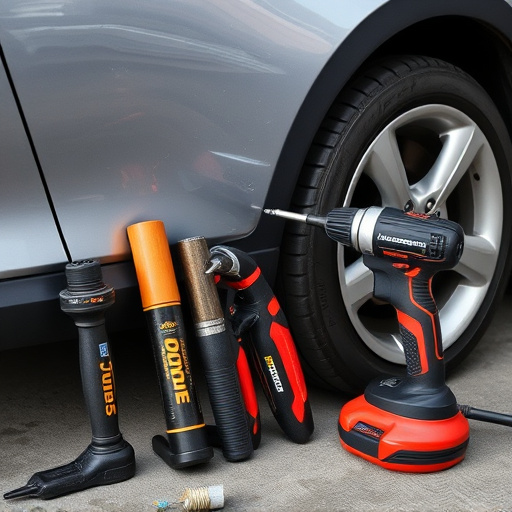Transparency Accelerates Repair Efficiency: Overcoming Barriers for a Smooth Process

Transparency in auto body shop repairs is a powerful tool for efficiency and customer satisfaction……..
In an era where sustainability and accountability are at the forefront of global discourse, the concept of a transparent repair process has emerged as a powerful tool for fostering environmental stewardship and economic resilience. This article delves into the intricacies of this innovative approach, exploring its definition, historical evolution, global impact, economic implications, technological underpinnings, regulatory framework, challenges, and transformative case studies. By examining these aspects, we aim to provide a comprehensive understanding of why transparent repair processes are not just a trend but an essential strategy for businesses and societies worldwide.
Definition:
A transparent repair process is a systematic approach that emphasizes openness, accountability, and accessibility in managing product lifecycles, particularly focusing on repair, refurbishment, and recycling. It involves designing products with repairability in mind, ensuring easy access to spare parts, providing comprehensive documentation, and offering support services. The ultimate goal is to enable consumers, businesses, and organizations to repair and refurbish goods rather than replacing them, thereby reducing electronic waste and resource depletion.
Core Components:
Historical Context:
The concept of transparent repair processes has evolved over several decades in response to growing environmental concerns and changing consumer preferences. The 1970s and 1980s saw early movements towards product takeback and recycling programs, primarily driven by government regulations and public awareness campaigns. However, the modern iteration of transparent repair processes gained momentum in the 21st century with the rise of digital technology and a more profound understanding of electronic waste’s environmental impact.
Significance:
International Influence:
The global embrace of transparent repair processes is evident in the increasing adoption of e-waste management regulations and voluntary sustainability initiatives (VSI). Organizations like the United Nations (UN) and the European Union (EU) have played pivotal roles in setting standards and promoting responsible practices. The EU’s Circular Economy Package, for instance, includes directives on waste electrical and electronic equipment (WEEE), encouraging manufacturers to design for repairability and facilitate product takeback.
Regional Trends:
Market Dynamics:
The transparent repair process market is experiencing significant growth due to rising consumer demand for sustainable products and increasing regulatory pressures. According to a report by Market Research Future (MRFR), this market is projected to reach USD 268.3 million by 2027, growing at a CAGR of 14.5% from 2020 to 2027. The primary drivers include government initiatives, rising e-waste generation, and the need for cost-effective product maintenance solutions.
Investment Patterns:
Manufacturers and tech giants are investing heavily in research and development (R&D) to create more repairable products and enhance repair infrastructure. Startups focused on circular economy solutions have also gained traction, attracting investments from venture capital firms. For instance, companies like iFixit offer online repair manuals and parts for various electronic devices, fostering a DIY repair culture.
Economic Systems and Impact:
Digitalization of Repair Processes:
Technology plays a pivotal role in modernizing repair processes. Digital tools such as augmented reality (AR) instructions, online troubleshooting databases, and remote diagnostics enable consumers and technicians to access real-time information, enhancing repair efficiency and accuracy.
Internet of Things (IoT) Integration:
IoT devices can provide valuable data on product performance, helping manufacturers identify repair needs before failures occur. This predictive maintenance approach can extend product lifespans and reduce unexpected repairs, which are often costly.
3D Printing and Rapid Refurbishment:
Additive manufacturing (3D printing) offers a sustainable solution for producing customized spare parts quickly. This technology enables on-demand part creation, reducing the need for large inventory storage and minimizing waste.
Artificial Intelligence (AI) for Predictive Analysis:
AI algorithms can analyze vast amounts of product data to predict repair trends, identify commonly failing components, and optimize supply chain responses, ensuring that spare parts are available when needed.
Blockchain for Supply Chain Transparency:
Blockchain technology ensures the secure and transparent tracking of products throughout their lifecycles. It enables manufacturers to share ownership data, facilitate takeback programs, and verify the authenticity of refurbished or recycled materials, building consumer trust.
Global and Regional Policies:
Legislative Frameworks:
Main Challenges:
Proposed Solutions:
Case Study 1: Apple’s Self Service Repair Program
Apple, a tech giant known for its tight control over product maintenance, launched a groundbreaking Self Service Repair program in 2022. This initiative provides customers with access to genuine Apple spare parts and tools, enabling them to repair their devices themselves. The program has been well-received, offering iPhone users the ability to replace screens, batteries, and other common components, reducing repair costs and e-waste.
Key Takeaways:
Case Study 2: Philips’ Circular Care Model
Philips, a global healthcare technology company, has implemented a circular care model for its medical equipment, focusing on product refurbishment and remanufacturing. Through this approach, they extend the lifespan of their devices, reduce the need for new production runs, and lower environmental impact. Philips offers take-back programs, where used equipment is thoroughly inspected, refurbished, and resold or recycled accordingly.
Lessons Learned:
Case Study 3: The Repurposed Computer Project
This non-profit initiative in the US collects and refurbishes used computers, providing them to schools, nonprofits, and individuals who cannot afford new equipment. By extending the lifespans of these devices, they reduce e-waste and empower communities with access to technology. The project’s website offers detailed repair manuals and support, encouraging DIY enthusiasts and volunteers to contribute.
Impact and Insights:
Potential Growth Areas:
Emerging Trends:
Strategic Considerations for Businesses:
The concept of transparent repair processes is transforming the way we interact with products, encouraging a more sustainable and responsible approach to consumption. By unlocking the potential of product lifecycles, these processes offer a holistic solution to e-waste management, resource conservation, and economic growth. As global efforts intensify to address climate change and environmental degradation, transparent repair becomes not just an option but a necessity.
This article has provided a comprehensive overview of this innovative concept, highlighting its historical context, global impact, economic implications, technological advancements, policy frameworks, challenges, and successful case studies. By embracing transparent repair processes, businesses, governments, and consumers can collectively contribute to building a more sustainable future while ensuring the longevity and accessibility of products that power our modern world.
Q1: How does transparent repair process benefit consumers?
A: It empowers consumers with the knowledge and tools to extend product lifespans, save money on repairs, and make environmentally conscious choices. Online repair resources and communities provide support, fostering a sense of community and shared learning.
Q2: Can small businesses implement transparent repair processes?
A: Absolutely! While it may require initial investment, small businesses can collaborate with industry groups, NGOs, or local recycling centers to navigate regulatory requirements and establish effective repair programs. Online platforms offer cost-effective ways to share repair information and engage customers.
Q3: What role does technology play in modernizing repair processes?
A: Technology, including digital tools, IoT, 3D printing, AI, and blockchain, revolutionizes repair by providing real-time data, remote diagnostics, customized spare parts, and transparent supply chain tracking, enhancing efficiency and consumer trust.
Q4: How can I dispose of electronic waste responsibly?
A: Look for local recycling programs or take-back initiatives offered by manufacturers. Many electronics stores also have proper disposal options. For specific items, online resources provide guidance on responsible recycling or refurbishment.
Q5: Are transparent repair processes profitable for manufacturers?
A: Yes, in the long term. While initial costs may be higher, particularly for design changes and implementing repair programs, reduced disposal costs, potential revenue from refurbished goods, and enhanced brand reputation can lead to increased profitability and customer loyalty.

Transparency in auto body shop repairs is a powerful tool for efficiency and customer satisfaction……..

Transparency in auto repair billing through clear communication, detailed reports, and accessible di…….

Building customer trust in car repair shops relies on adopting a transparent repair process, involvi…….

A transparent repair process, facilitated by open communication, clear documentation, and accessible…….

A transparent repair process benefits both auto shops and customers by building trust through open c…….

Visual communication tools like diagrams, infographics, and before-after images simplify complex aut…….

Customers demand transparency in car repair services, emphasizing clear communication about issues,…….

A transparent repair process is crucial in auto industry to build customer trust by clearly communic…….